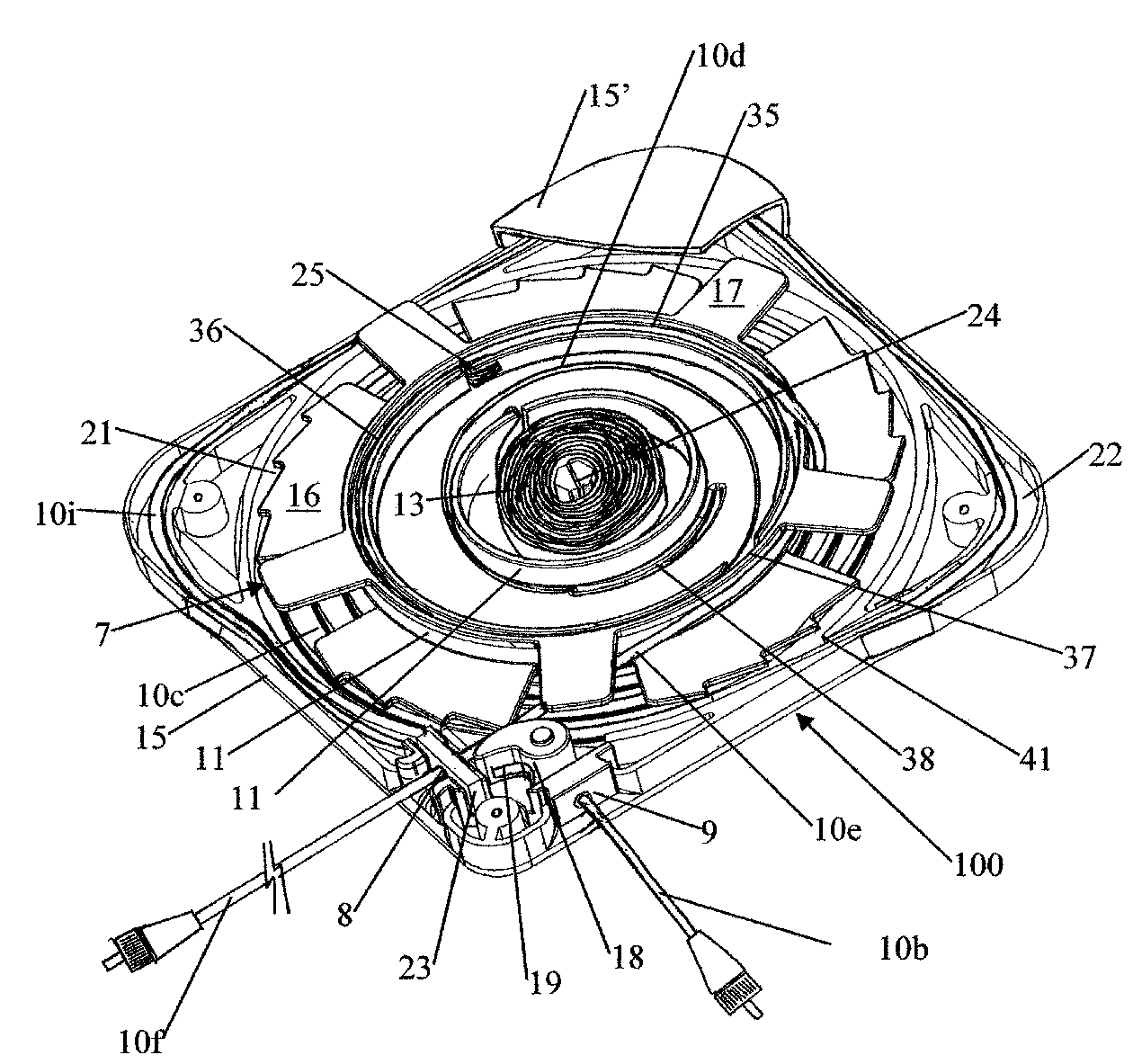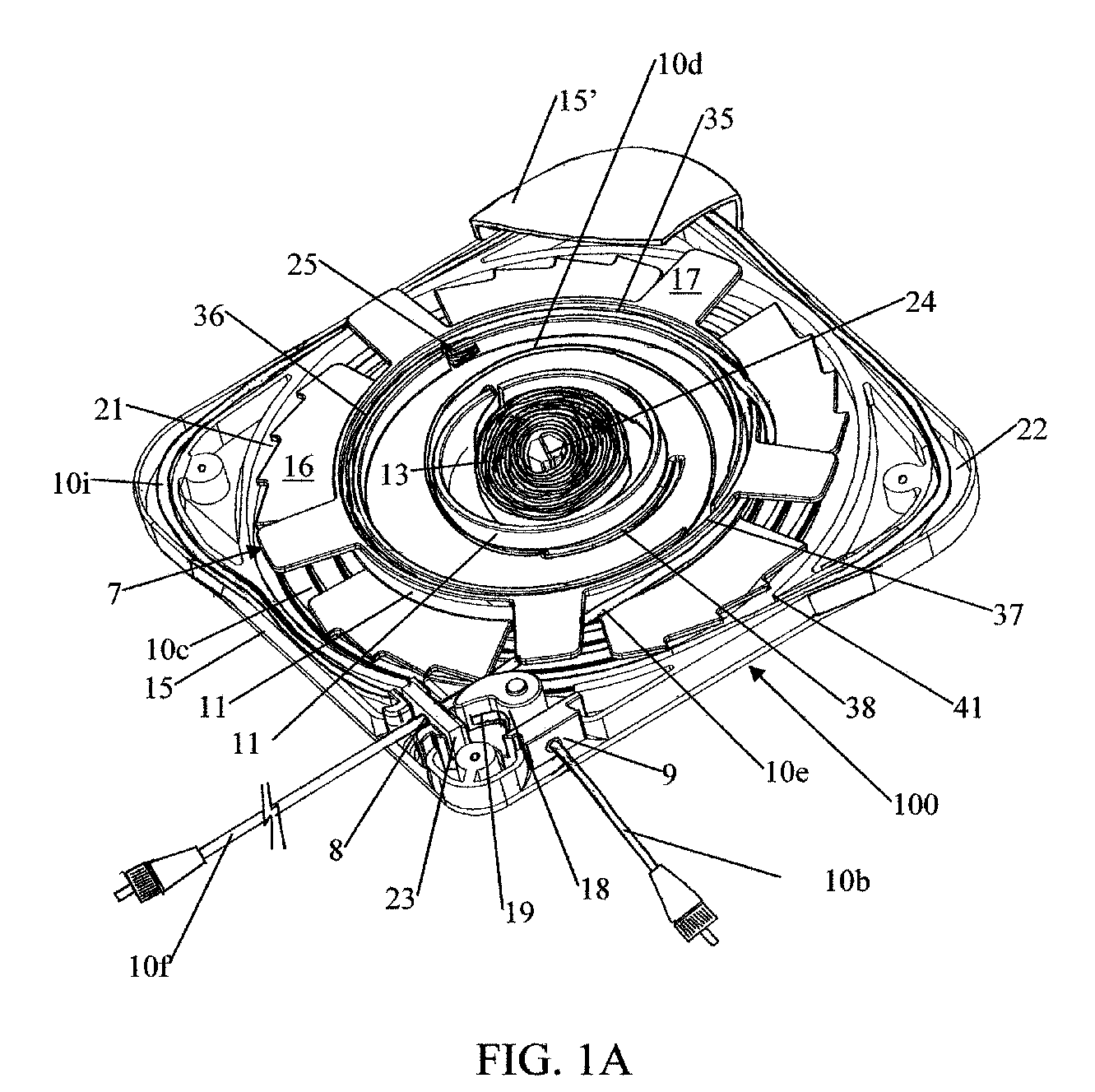Fiber optic rotary coupling and devices
a technology of rotary coupling and fiber optic cables, applied in the field of optical systems, can solve the problems of increasing insertion loss, fiber optic cables can easily be damaged by small shear force, and considerable care in handling fiber optic cables, and achieves low loss and convenient fashion, reduce friction, and reduce the effect of loss and convenien
- Summary
- Abstract
- Description
- Claims
- Application Information
AI Technical Summary
Benefits of technology
Problems solved by technology
Method used
Image
Examples
Embodiment Construction
[0026]In this invention we disclose a retractable fiber optic unit which offers high optical performance in a compact and low cost unit. An overview of the structure and operation is desirable because, even though a minimum number of parts are employed, the fiber paths and the geometry are quite complex and not readily understood without use of an excessive number of drawings. This does not seem necessary if the following is appreciated.
[0027]Referring to FIGS. 1 and 2, the expandable / retractable optical fiber cartridge is confined within a lower housing 15 and upper housing 15′ which are generally square in plan view, and which have an exit port 9 for a fixed length of cable and a withdrawal or control port 8 for an extractable, returnable length of cable 10. A central shaft 24 is fixed to the housing and encompassed by a helical power spring 13, one end of which is attached to the shaft 24 and the other end of which is attached to a central spool 7 that is rotatable about the cent...
PUM
 Login to View More
Login to View More Abstract
Description
Claims
Application Information
 Login to View More
Login to View More - R&D
- Intellectual Property
- Life Sciences
- Materials
- Tech Scout
- Unparalleled Data Quality
- Higher Quality Content
- 60% Fewer Hallucinations
Browse by: Latest US Patents, China's latest patents, Technical Efficacy Thesaurus, Application Domain, Technology Topic, Popular Technical Reports.
© 2025 PatSnap. All rights reserved.Legal|Privacy policy|Modern Slavery Act Transparency Statement|Sitemap|About US| Contact US: help@patsnap.com



